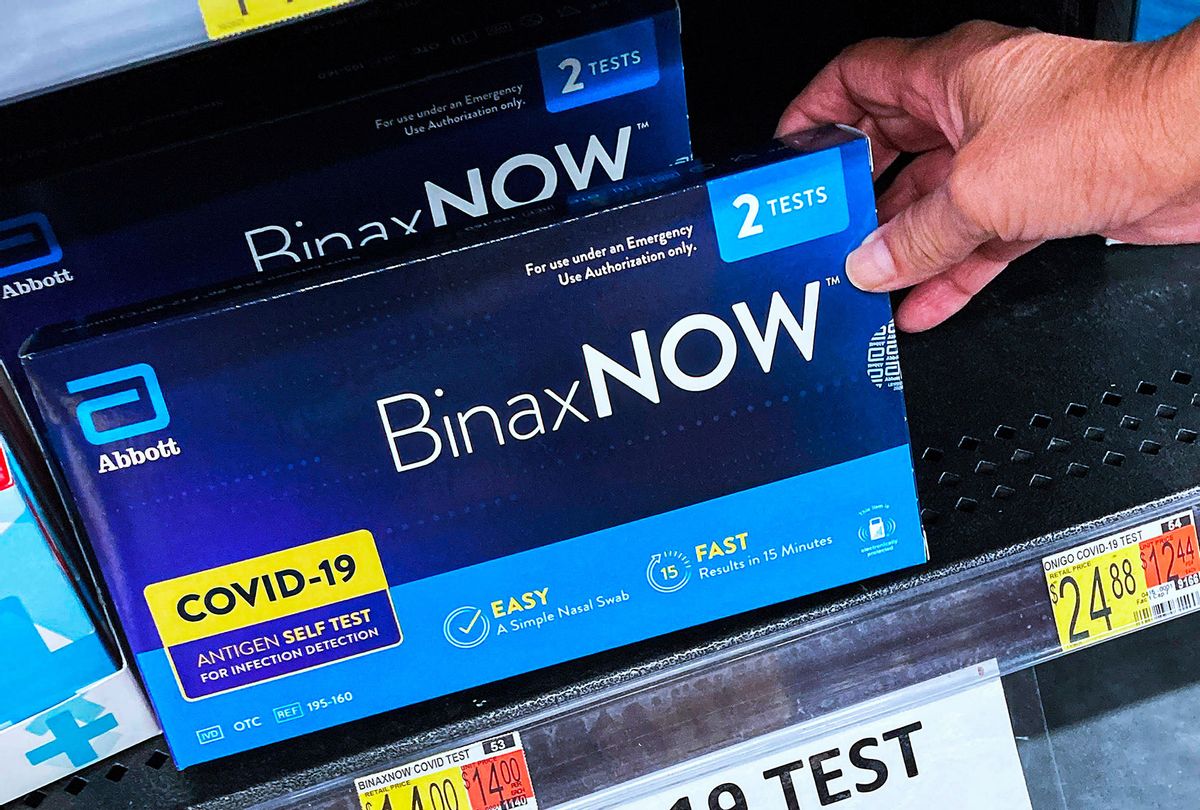Anyone who's had a COVID-19 scare over the last few weeks has likely experienced how challenging it can be to find an at-home test.
"Difficult doesn't even describe it. I think you have better luck finding a diamond than one of these at-home tests in Northern New Jersey," said Matthew Hart from Texas who was visiting family over the holidays.
During the visit, they thought a family member had COVID-19, and therefore they wanted to find a rapid at-home test. Unlike Polymerase chain reaction tests, also known as PCR tests, which are considered the gold standard for detecting the virus but can take a few days to get a result, at-home tests can yield one in 15 minutes.
"Everywhere you went, Walgreens & CVS mostly, they had a sign at the door saying they didn't have any tests left, this was the case for the entire week we were there; it didn't matter what day or time you went, you weren't going to find one of those tests."
Indeed, Hart's story isn't a unique one.
"I have had an extremely difficult time finding a COVID test," said Matt Campbell from Colorado. "I live in a small mountain town in Colorado. On Monday our Walgreens received 3,000 COVID tests and they sold out within two hours, the employees said it was the busiest day they have ever seen."
Want more health and science stories in your inbox? Subscribe to Salon's weekly newsletter The Vulgar Scientist.
Plenty of people have tales about how impossible it feels in many places to get an at-home test right now during the omicron surge — and how frustrating it is when appointments for PCR tests are hard to come by, too. The good news is that help is on the way via the Biden Administration, but maybe people are concerned it will arrive too late. Indeed, the Biden Administration has promised to ship 1 billion at-home tests to Americans. On Friday, the Biden Administration announced shipping will begin on January 19, and each family in America will be eligible to get four free at-home tests via this website. The Biden Administration is also requiring health insurers to cover the cost of eight tests per person for those who purchase an at-home test from a retailer starting this weekend.
But why have at-home tests been so hard to come by these days?
Carri Chan, Professor and Faculty Director of the Healthcare and Pharmaceutical Management Program at Columbia Business School told Salon the current shortage of at-home tests is likely a confluence of various factors. The first is the supply and demand mismatch. Prior to the omicron surge, at-home tests weren't in such high demand.
"The first, which we could have predicted, was the holiday season and the gatherings, and so people naturally and smartly wanted to get tested before gathering with lots of people," Chan said. "What was less predictable was the rapid rate at which the omicron variant swept through the country, and so the combination of those two put a time where demand would already have been higher than normal, really out of reach of the current demand."
Chan noted that many at-home manufacturers ramped down production over the summer because the demand wasn't there like it was in other countries. Thus, ramp-down of the production over the summer has likely made it more difficult to catch up now with the increase in demand. "I can tell you that we're seeing unprecedented demand for BinaxNOW and we're sending them out as fast as we can make them," John Koval, Abbott's director of public affairs for rapid diagnostics, told Recode in December. "Despite public health guidance over the summer that caused the market for rapid testing to plummet, we never stopped making tests."
Chan told Salon it's difficult to know exactly how long ramp-up to meet such high demand will take because there are so many moving components to production.
"It depends on what is the access to the raw materials, the solution, the swabs, the papers, and so there are lags in getting those raw materials to factories," Chan explained. "Then you have to think about once you are at the production facility, your capacity depends on the availability of the raw materials, but also staff to work there as well as the machines that are necessary."
In terms of staffing these factories, because demand wasn't there over the summer, a lack of labor shortages now and the omicron variant are likely causing a delay to ramp-up production as well, Chan said.
"That's in part why it's challenging to immediately ramp up production," Chan said. "If you have a large enough factory and you have enough staff, you could be spitting out many kits very rapidly, but it just takes a lot of time to ramp up that capacity and you can't do it instantly."
So, can the situation be rectified at this point via the Biden administration's plan?
"I think it's a step in the right direction, in a number of cities, and I'm based in New York, there's a cautiously optimistic view that we are perhaps past the omicron peak, but that doesn't mean that we're out in the woods yet," Chan said. "Because the peak just means we're not going to continue to increase infections, but the total number of infections we're having daily is already very high, so it's going to take a while before we go back down, but it would have been more beneficial if we had this availability just one month ago in anticipation of the end of year holiday celebration, and before things with this particular variant really took off."
More on the fight against COVID-19:



Shares